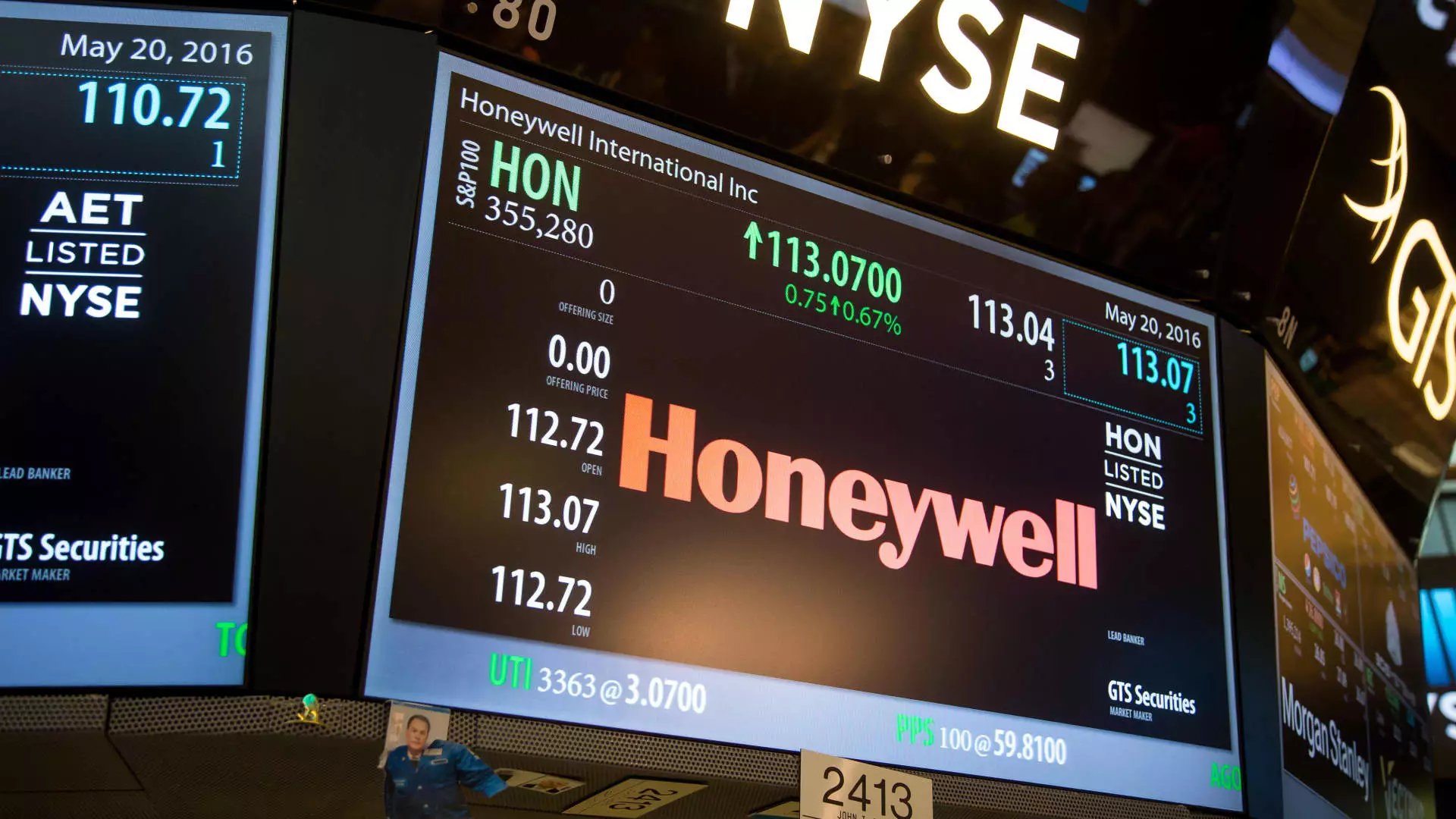Honeywell International Inc., a stalwart in the industrial sector, recently found itself under scrutiny following its third-quarter earnings report. Revealing a blend of positive and challenging trends, the company’s results sparked a notable 4.5% drop in its stock prices, becoming a significant contributor to the downturn in the Dow Jones Industrial Average. While the numbers showcased some encouraging elements, the mixed nature of the report raised eyebrows among investors and analysts alike, leading to a deeper examination of Honeywell’s current trajectory and future prospects.
Honeywell’s third-quarter revenue increased by 5.6% year-over-year, totaling $9.73 billion. However, this figure fell short of expectations, failing to meet the consensus of $9.9 billion compiled by LSEG. Conversely, adjusted earnings per share (EPS) grew by 8.4% reaching $2.58, comfortably surpassing the consensus projection of $2.50. This discrepancy between revenue and profitability points to interesting dynamics within Honeywell’s operational execution, suggesting that while top-line growth may have stagnated, the company has managed to maintain cost discipline resulting in stronger than anticipated bottom-line performance.
Investors reacted swiftly to the disappointing revenue figures, causing Honeywell’s stock to tumble, yet it’s essential to approach this pullback with a discerning eye. The decline in stock price presents a potential buying opportunity for investors who believe in the company’s future prospects. Despite the mixed performance, there are tangible indicators suggesting that Honeywell is gearing up for improved operational health and profitability as we move toward 2025. The company’s ability to navigate setbacks—such as project delays and supply chain disruptions—has shown resilience and a commitment to long-term growth strategies.
New CEO Vimal Kapur, who steered the discussion during the post-earnings conference call, expressed optimism about Honeywell’s strategic direction. Among his prioritized initiatives is a series of significant acquisitions, encompassing Carrier’s security business and Civitana, which he deems essential in enhancing the company’s capabilities in automation and energy transitions. The strategic closures of these deals, valued at around $9 billion, are forecasted to contribute an additional $2 billion in annual sales, indicating a conscious effort to realign Honeywell’s portfolio towards high-growth sectors.
Additionally, Kapur highlighted plans to divest non-core businesses, including the advanced materials and personal protective equipment segments. This strategic focus on core competencies aims to elevate Honeywell’s organic growth rate and profitability—aligning resources with the identified mega-trends of automation, future aviation, and energy transition.
Industry Context: Challenges and Competitors
While Honeywell navigates its own set of challenges, the broader industrial landscape does not offer much respite either. Competitors such as Emerson Electric, RTX, and 3M are also contending with fluctuating demand and supply chain recovery timelines. This shared uncertainty underscores the sensitivity of industrial companies to economic cycles, particularly within short-cycle business segments that require quick order placements and deliveries. The failure to witness a robust rebound in short-cycle business has been a notable hurdle, prompting Honeywell to adapt its outlook for the remainder of the fiscal year.
Despite the headwinds faced in the current quarter, there is optimism about Honeywell’s trajectory. The company’s rebuttal to setbacks indicates a strategic pivot towards a future-ready approach. Kapur’s guidance for 2025 entails anticipated organic growth across all operating segments, coupled with an expected expansion of the company-wide segment margin. This underscores a forward-looking confidence in improvement, which could serve to assuage investor concerns and position Honeywell favorably in the long term.
The recent adjustments to Honeywell’s outlook can be viewed as a realistic reassessment rather than a cause for panic. The anticipated rebound from operational disruptions, combined with a solidified order backlog of $34 billion—a 10% year-over-year increase—suggests potential resilience and strength.
While Honeywell’s third-quarter results presented a mixed bag of outcomes, the company’s corrective measures and strategic initiatives underscore a focused intent on growth and diversification. These elements coupled with the positive long-term outlook projected by management present a compelling case for investors who value strategic positioning in response to the industrial sector’s evolving dynamics. Observers will inevitably keep a watchful eye on how Honeywell’s execution unfolds as we transition toward 2025.

